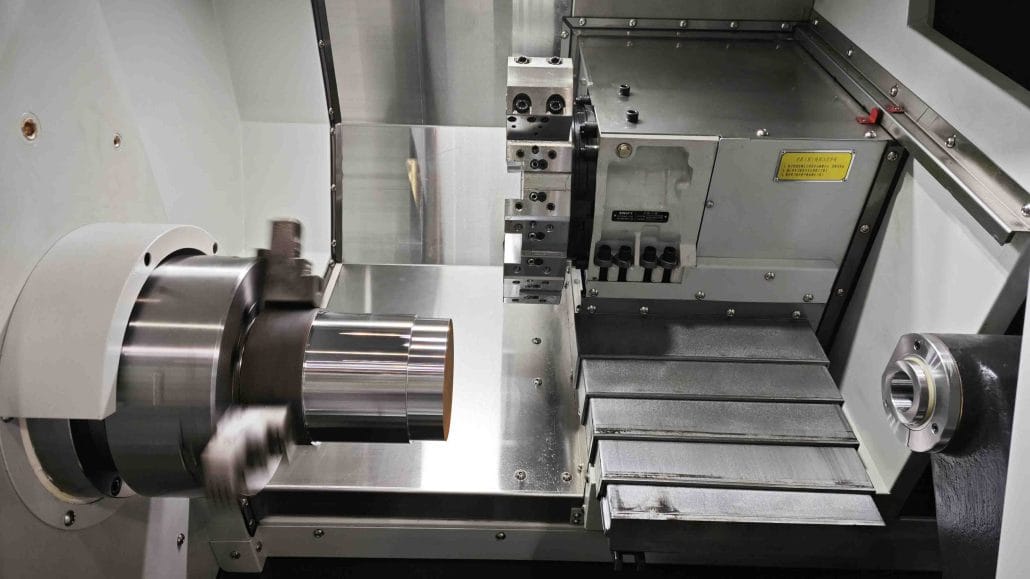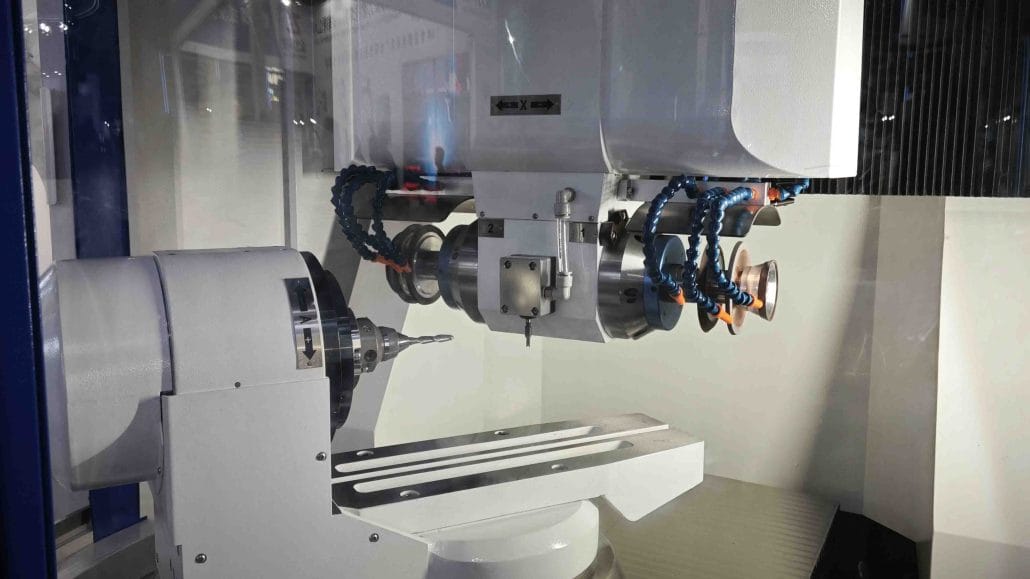As the use of computer numerical control (CNC) turning machines continues to grow in popularity across different industries, it has become increasingly essential to possess advanced technical knowledge in operating and manipulating these machines. One crucial aspect of CNC turning that is often overlooked, yet critical, is understanding how to calculate the rotation per minute (RPM) of the spindle. RPM is a fundamental measurement that determines the cutting speed, feed rate, and the desired quality of the machined component. In this guide, we will provide a comprehensive approach to calculating RPM in CNC turning.
Understanding the Basics of RPM
RPM defined as the number of complete revolutions the spindle makes per minute, is a critical factor in determining the speed and feed rate of a cutting tool. The formula for calculating RPM is as follows:
RPM = (Cutting Speed x 12) / (π x Diameter)

Where:
• Cutting Speed: This is the speed at which the tool moves along the workpiece and is measured in surface feet per minute (SFM). It is an essential parameter that depends on the material being machined, machining process, and the tool’s properties. Cutting speed is calculated using the formula:
Cutting Speed (SFM) = (4 x Cutting Tool Diameter x Spindle Speed)
• Diameter: This refers to the diameter of the stock material and can be determined using calipers or a micrometer.
• π (Pi): This is a constant value used in mathematics and is approximately equal to 3.14159.
Using the Formula to Calculate RPM
Let’s assume we need to machine a steel part with a diameter of 3 inches, using a carbide tool with a cutting speed of 200 SFM. We can calculate the RPM using the following steps:
1.Determine the cutting speed, using the formula:
Cutting Speed (SFM) = (4 x Cutting Tool Diameter x Spindle Speed)
Therefore, spindle speed (RPM) = Cutting Speed (SFM) / [4 x Cutting Tool Diameter]
= 200 / [4 x 0.25]
= 2000
2.Determine the RPM using the formula:
RPM = (Cutting Speed x 12) / (π x Diameter)
= (200 x 12) / (3.14159 x 3)
= 2417
Therefore, the spindle speed for this operation should be set at 2417 RPM to ensure optimal performance.

Offer some practical tips and best practices to optimize your cutting performance:
Step 1: Identify the Cutting Tool’s Diameter
Before you can calculate RPM, you need to know the diameter of the cutting tool you’ll be using. This dimension can vary depending on the type of tool, the material you’re cutting, and the depth and width of the cut. Use a micrometer or caliper to measure the cutting tool’s diameter with high precision. Make sure to account for any wear or damage on the tool’s edges, as this can affect the quality of the cut and the RPM needed.
Step 2: Determine the Workpiece’s Material and Hardness
The material and hardness of the workpiece are also essential factors in determining the RPM for CNC turning. Different materials such as aluminum, steel, brass, or plastics, have different cutting speeds and coefficients of friction. Harder materials require slower RPM to prevent overheating and tool wear. Look up the manufacturer’s recommendations or consult a cutting speed and feed chart to select the appropriate RPM range for your material and hardness.
Step 3: Calculate the Cutting Speed
Once you have the cutting tool’s diameter and the workpiece’s material and hardness, you can calculate the cutting speed, expressed in surface feet per minute (SFM). Cutting speed is the distance a point on the cutting tool travels in one minute. It depends on the RPM, the cutting tool’s diameter, and the type of material’s coefficients of friction. The formula to calculate SFM is:
SFM = RPM x D x π /12
Where D is the cutting tool’s diameter in inches, and π is a constant (3.14). For example, if you’re using a 0.5-inch diameter carbide tool to cut steel, and the recommended SFM is 300, your RPM value would be:
RPM = SFM x 12 / D x π
RPM = 300 x 12 / (0.5 x 3.14) = 2283
Remember that the RPM may need adjustments based on the cutting depth, feed rate, and coolant’s application. Experiment with different RPM values to find the optimal balance between cutting speed and tool life.
Step 4: Check for Safety, Consistency, and Accuracy
Before starting the CNC turning program, make sure to check for safety, consistency, and accuracy. Verify that all machine parts are secured and lubricated, the workpiece is clamped and centered correctly, and the cutting tool’s geometry and sharpness are adequate. Monitor the RPM continuously to avoid exceeding the recommended range and causing thermal instability or chatter. Use a tachometer or RPM sensor to measure the spindle speed accurately and adjust it if necessary. Check the cut surface finish, accuracy, and dimensions with a micrometer or digital gauge to ensure they meet the specifications.
Conclusion: How to Optimize RPM in CNC Turning
In summary, calculating the RPM for CNC turning requires understanding the cutting tool’s diameter, the workpiece’s material and hardness, and the cutting speed’s formula. By selecting the appropriate RPM range and checking for safety, consistency, and accuracy, you can optimize your CNC turning process and achieve better results with less waste and scrap. Remember to consult cutting speed and feed charts, manufacturer’s recommendations, and experienced CNC operators for best practices and tips to improve your skills and knowledge. With practice and patience, you can master the art of calculating RPM in CNC turning and unlock new opportunities for precision manufacturing.
Calculating RPM in CNC turning is a crucial skill that helps operators achieve the desired quality and efficiency in their work. Understanding the formulas used in calculating RPM, along with the relevant parameters such as cutting speed and stock diameter, is vital. We hope that this guide has provided you with a comprehensive understanding of how to calculate RPM in CNC turning and will help you take your operations to the next level.

